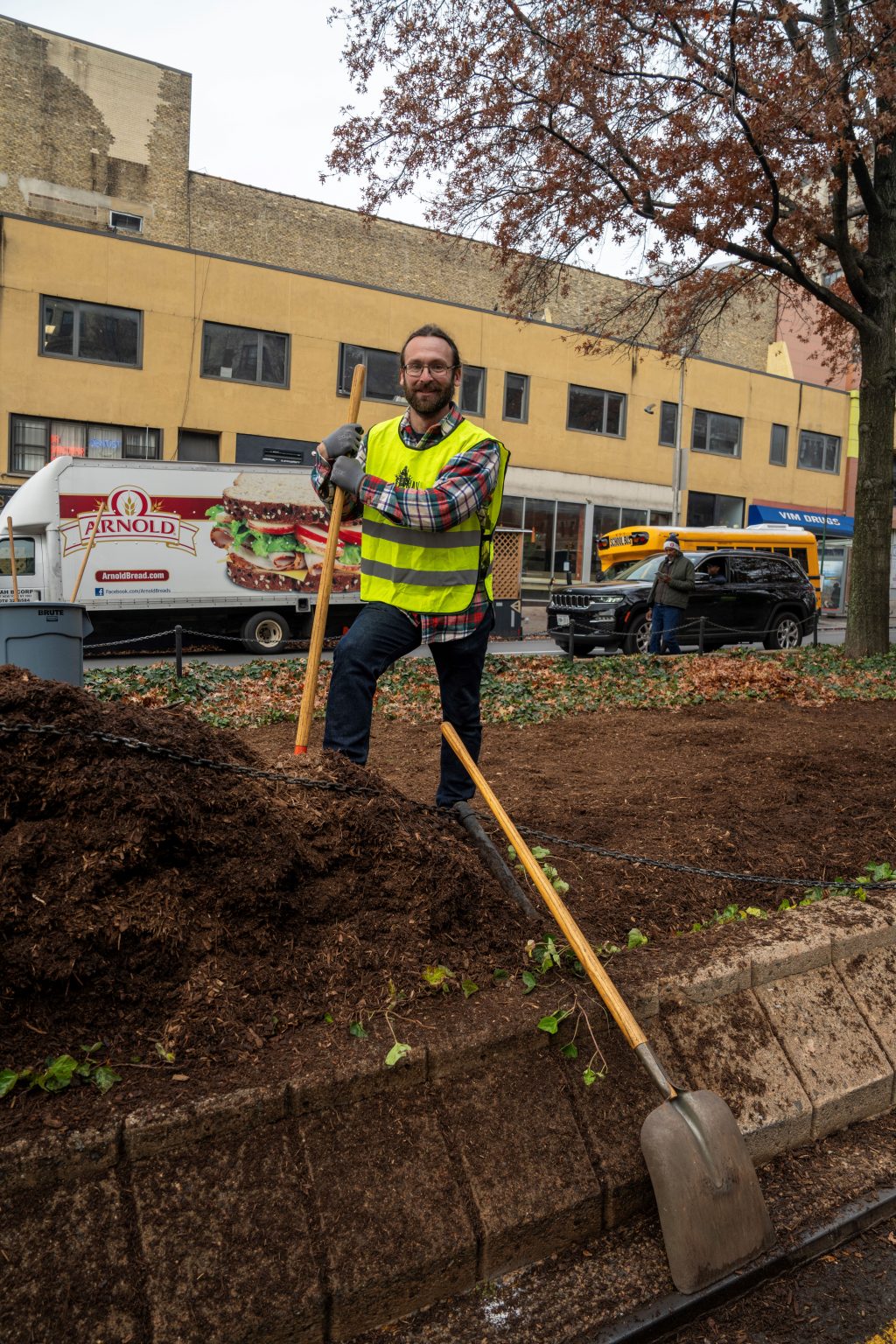Ian Olsen joined the Broadway Mall Association as Director of Horticulture in the final week of October 2023. Almost immediately, he was on the phone, on the computer, and in meetings, getting his hands dirty in the soil of the avenue medians known as the Broadway Malls. His primary challenge was to implement plans for the restoration and revival of the urban green space, to make it not only green and thriving but also a model of local and natural heritage to be enjoyed, a source of education, and neighborhood pride. The Broadway Mall Association has cheered on through the months. Funding for this area and the restoration of the 83rd and 164th Street malls was supplied by a generous donor.
The project was conceived not as an entire “gut” renovation in building terms but rather as a thoughtful revitalization of the malls’ aging plantings, replacing them with a diverse palette of native plants and, in essence, performing an ecological restoration on these tiny urban islands.
In mid-May 2024, the 83rd Street Mall was just about ready for its official photo shoot and ribbon cutting scheduled for the following weeks. “Shrubs and trees were planted in the first stage, with perennials, grasses, and ferns ready to be planted next week.” The decades-old post and chain fence that had fallen into disrepair over time was repaired.
Olsen noted that no soil was removed but regenerated with organic materials. The needs of the soil were assessed at The Urban Soils Lab at Brooklyn College, with the goal of taking whatever measures were required to maximize our understanding of the urban soils and the best means of remediating through organic land care. Olsen said, “We were fortunate that the malls are elevated from stormwater runoff, minimizing conditions that might otherwise be damaging.” Also, Olsen explained that the work involved removing a ground cover of English Ivy that, when removed, allowed weeds to grow freely. Maintaining a weed-free environment is, of course, an ongoing challenge. Rats are a potential problem, but because what is created is, in fact, a miniature ecosystem of native plants, Olsen explained, “The reintroduction of desirable fauna will likely help exclude rats.”
Plants seem resistant to factors like toxic emissions and other air-borne pollutants that might be thought to negatively impact their growth, but they, in fact, help to clean the air of particulate matter. The native plants are, however, sensitive to the unique microclimates in each mall and need to be positioned carefully according to their ecology and other attributes.
All this new planting needs almost daily management by Olsen, other members of the Broadway Mall Association team, and other partners involved in the care of the malls.
A fundamental goal of this project is to create an enhanced native habitat with an educational component promoting NYC’s natural heritage. Signage explaining the names, origins, and distinguishing characteristics of plantings has been designed.
A new Sweetgum tree has been planted, and as a nod to past horticultural endeavors at the site, some Yucca shrubs planted decades ago (native to the southeastern US) have been spared, “keeping in mind a certain awareness of the cultural history when native plantings in urban green spaces were less of an ideal.”

 By
By